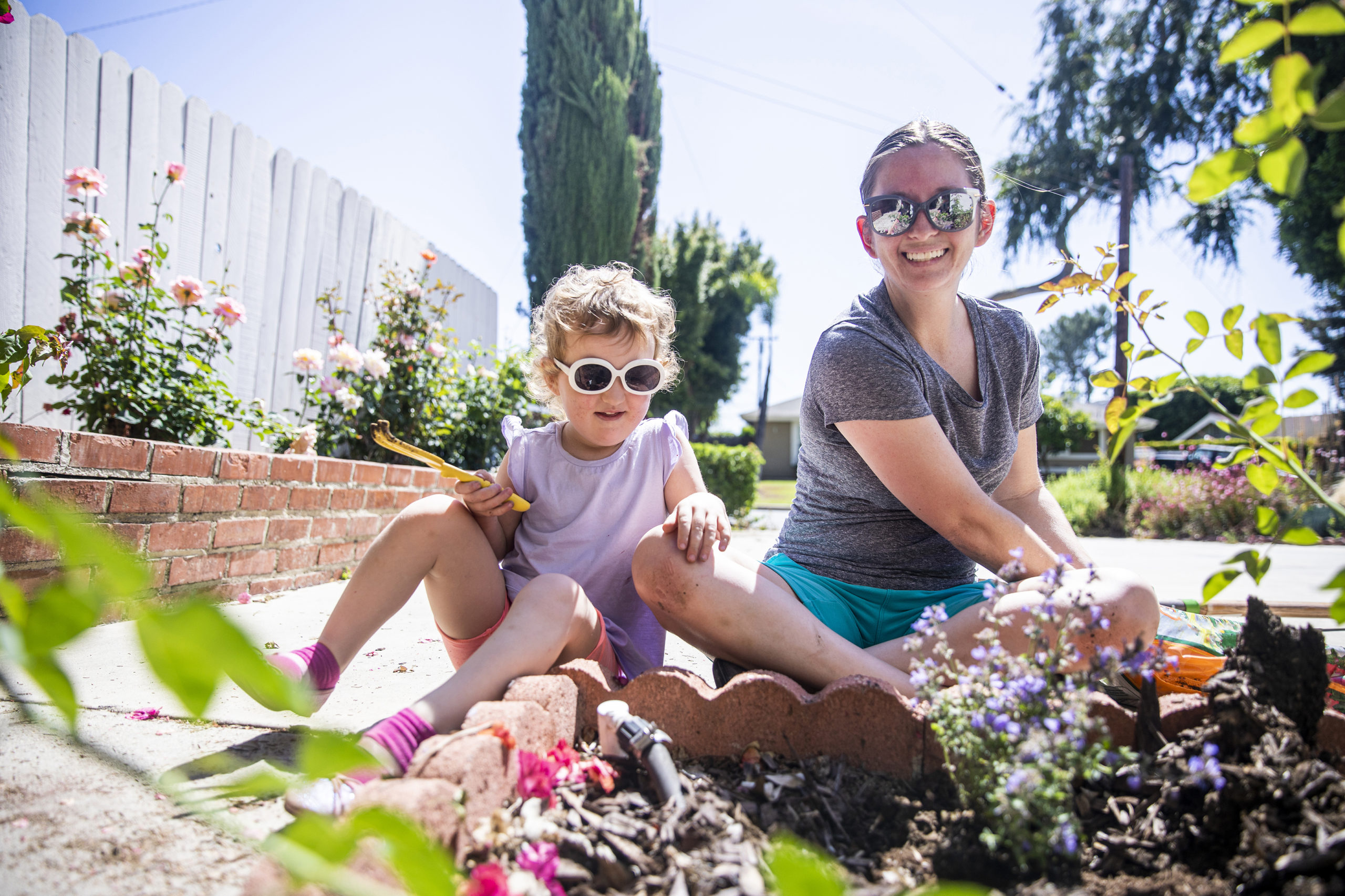Tips for Spring Home Improvement Projects
April 14, 2021

Spring is the perfect time to dive into a home improvement project. Whether your home upgrade involves remodeling, a fresh coat of paint on the walls, or landscaping, we have some tips to help you get to work in a stormwater-safe way! Continue reading to learn about preventing stormwater pollution in Orange County while improving your home.
Why Keep Water Quality in Mind When Improving Your Home?
Many homeowners see spring as a time to start home improvement projects but may not know that certain materials and their byproducts can cause significant damage to the environment. If not used or disposed of correctly, everyday home improvement activities such as painting, remodeling, and landscaping can lead to water pollution through the storm drain system. Unlike the sanitary sewer system, water that flows through the storm drain system is not treated before entering our local waterways and flowing to the ocean. This pollution can negatively impact recreational water use, wildlife habitat, and even human health.
Learn more about the difference between storm drains and the sanitary sewer in our blog.
How to Prevent Runoff Pollution?
Here at H2OC, we strive to keep our waterways sparkling. There are many actions you can take to prevent stormwater pollution and preserve the quality of our waterways. Whether you hire a contractor or do it yourself, it is essential to follow these simple tips to help prevent water pollution while renovating, remodeling, or improving your home.
Tips to Make Your Home Improvement Project Stormwater-Safe
Spring into action with these tips to make your home improvement project stormwater-safe:
Painting
- Measure the room or object to be painted, then buy only the amount needed.
- Only rinse painting tools such as brushes, buckets, and rags in a sink connected to the sanitary sewer.
- Always store leftover paint in a cool, dry location away from sunlight.
- Before storing paint, wipe away any paint residue from the rim and the outside of the can and place a piece of plastic wrap over the opening. Then replace and seal the lid by using a rubber mallet to tap around the edges to set it firmly into place – this prevents inadvertent spills.
- Use water-based paints whenever possible because they are easier to dispose of. First, remove the lid and let the paint dry out in the can. Then, once dried, throw the solid paint portion into the regular trash, and try to rinse and recycle the paint can whenever possible.
- Dispose of oil-based paint by taking it to a Household Hazardous Waste Collection Center (HHWCC) or PaintCare drop-off site.
Learn more tips for projects using paints and click here or call (714) 834-6752 to find a Household Hazardous Waste Collection Center location near you.
Landscaping
- Cover bare spots in your yard with mulch or vegetation and cover stockpiles of topsoil, mulch, or other bulk landscaping materials. Exposed soil can easily wash away during a rain event, contributing to sediment pollution which adversely affects aquatic life. If you have a hard time getting grass or plants to grow, consider replacing turf with porous ground cover (e.g. rock) or by planting OC Friendly Ground Cover. You can also find additional tips and tricks on our Landscape Improvement page.
- If your yard is sloped, think about terracing the land into steps to help slow water down as it moves across your property.
Learn more pollution prevention tips for lawn & garden care.
Home-Renovation
- Keep all construction debris away from the street, gutter, and storm drain.
- Take construction debris to a Construction & Demolition Debris Diversion Facility. Or use a professional construction and demolition recycling company to dispose of debris.
- Instead of rinsing renovation debris with water, sweep it up and dispose of it in a covered bin.
More General Tips
- Schedule outdoor projects for the dry season, which is May 1 to September 30. This is especially important for excavation and grading projects as it reduces the chance that rain will wash your materials into the storm drain.
- Store materials under cover with temporary roofs or plastic sheets to eliminate or reduce the possibility that water or wind will carry materials from the project site to the street or storm drain system.
- Store household hazardous waste in closed, labeled containers indoors or under a cover and dispose of it at a household hazardous waste collection center.
Learn how to dispose of your waste correctly by following these six simple steps. Or, to find a Household Hazardous Waste Collection Center location near you, click here or call (714) 834-6752.
The Final Takeaway?
As we live, work, and play in Orange County, it’s our job to make sure that pollutants do not make it to our waterways. By doing home improvement projects in a stormwater-safe manner, we can keep common pollutants off the ground and out of storm drains. At H2OC, we encourage everyone to adopt these healthy household habits to keep storm drains and the ocean clear of polluted runoff. Thank you for reading this blog on how to reduce runoff pollution during home improvement projects.
Like the Information in This Blog?
- Learn more. For more information about how to practice healthy household habits while also caring for our waterways, view our Home Repair & Improvements page or our Tips For Home Improvement Projects brochure.
- Spread the word. Share this blog post on social media, and don’t forget to like our Facebook page and follow us on Instagram.
- Stay in the know. We’re on a mission to share meaningful content. Subscribe to our email list and get the latest and greatest delivered straight to your inbox.